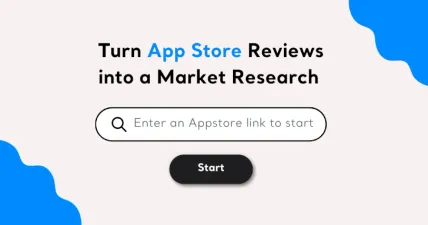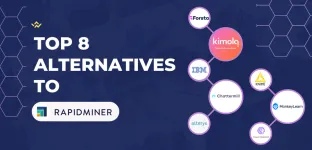Amazon Comprehend Alternatives & Competitors for Customer Feedback Analysis
Dec 08, 2025 - 15 minute read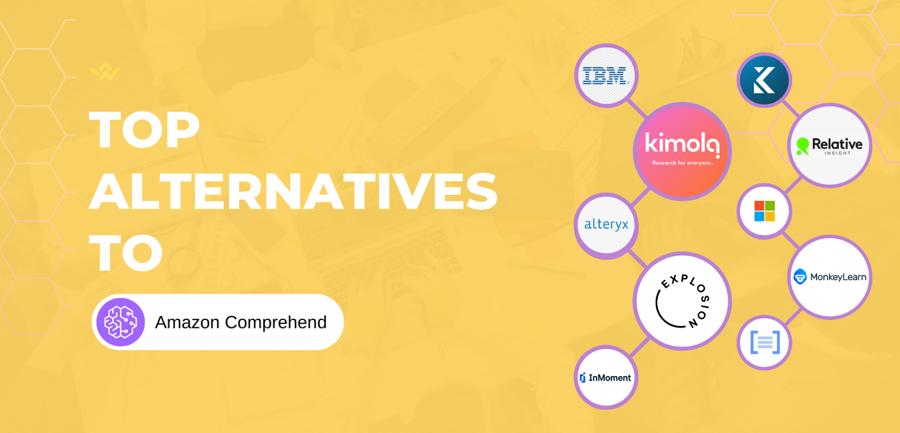
The research area extends back to ancient Greece and China, with the oldest examples. The beginning of what is defined as "modern research" dates back to the 1300s. Until today, the focus of the marketing and research fields was data collection. As important as collecting data is, this approach has changed dramatically in recent years because there is a huge amount of customer data. Compared to the 1300s, our biggest concern now is not to collect data but to analyze the qualified customer feedback that is collected.
With this data, brands can gain insights into customer behavior, preferences, and needs and better meet their products, services, and marketing activities in line with those needs. In fact, although there is a lot to be said on this subject, Frank Eliason has a saying: "Listening is hearing the needs of the customer, understanding those needs, and making sure the company recognizes the opportunity they present."
However, with so much data to analyze, not knowing where to start can be overwhelming and tiring. That's why there are many platforms that automatically analyze customer feedback.
Is Amazon Comprehend suitable for customer feedback analysis?
Amazon, which is one of these companies that we have heard about in every field, has an artificial intelligence-supported solution for analyzing textual data: Amazon Comprehend. But even though Amazon Comprehend is shown as a platform to analyze customer feedback on marketplaces like G2, Capterra, Trustradius, actually there are many platforms to analyze customer feedback better. The biggest problem of using Amazon Comprehend to analyze customer feedback is it's actually not built to do so; Amazon Comprehend doesn't even offer a dashboard to view your analysis, and actually, it's pretty much built for the developer community. There are many reasons to not to use Amazon Comprehend for customer feedback analysis, but rather than listing those things, I will tell you about some of the customer feedback analysis platforms that are better alternatives to Amazon Comprehend. Below are the six crucial factors that need to be considered while selecting a customer feedback analysis software:
- Pricing strategies
- Product features
- Customer reviews
- Target markets
- Advantages and disadvantages of each option
- Capability to analyze customer feedback
If you're looking for an alternative to Amazon Comprehend fur customer feedback analysis, you can be sure that you've found the right blog post.
What is Amazon Comprehend ?
Amazon Comprehend is one of the artificial intelligence services of Amazon Web Services. It is a natural language processing (NLP) service that looks for patterns and connections in text using machine learning.

Amazon Comprehend's key features are language detection, sentiment analysis, entity recognition, keyword extraction, topic modeling, syntax analysis, and custom classifiers. It can identify the language used in a text document, determine whether the text is positive, negative, or neutral, and identify entities such as people, organizations, and locations mentioned in the text. It can also extract important sentences from the text, group similar documents by topics, and analyze the grammatical structure of a sentence. Moreover, businesses can train the service to recognize certain entities or emotions unique to their business.
Despite these features, the complexity of the pricing and the lack of rich functionality in the interface are seen negatively by the users. Also, you will need a developer buddy or team to connect your data with Amazon's API which is not very sustainable as you won't have a dashboard unless you've built one!
Alternatives to Amazon Comprehend
1-Kimola (Suitable for customer feedback analysis, sign up free, no credit cards required!)
2- MonkeyLearn (Suitable for customer feedback analysis)
3- Alteryx (Not suitable for marketing teams)
4- IBM Watson Tone Analyzer (Analyzes emotions but lack of pre-built models)
5- Google Cloud Natural Language API (It's only API, not for marketing teams, no ready-made models for different business types)
6- Microsoft Text Analytics API (It's only API, not for marketing teams)
1- Amazon Comprehend vs. Kimola
An easy-to-use tool for analyzing consumer reviews, Kimola can collect information from numerous sources, including Amazon, Trustpilot, Yelp, and Etsy. It allows GPT integration to produce executive summaries, product descriptions, and social media themes based on client feedback and can swiftly evaluate and categorize the data. In order to improve their goods and services, businesses can use this information to better understand the requirements and preferences of their clients.
If you're interested in a genuine customer feedback platform, Kimola is a much better alternative to Amazon Comprehend. Actually, I'm not the only one saying this either; many users complain about Amazon Comprehend's poor interface and incomprehensible mixed pricing. The purpose of this analytics platform is to assist market research teams in gaining a deeper understanding of their customers and developing meaningful features that cater to their needs.
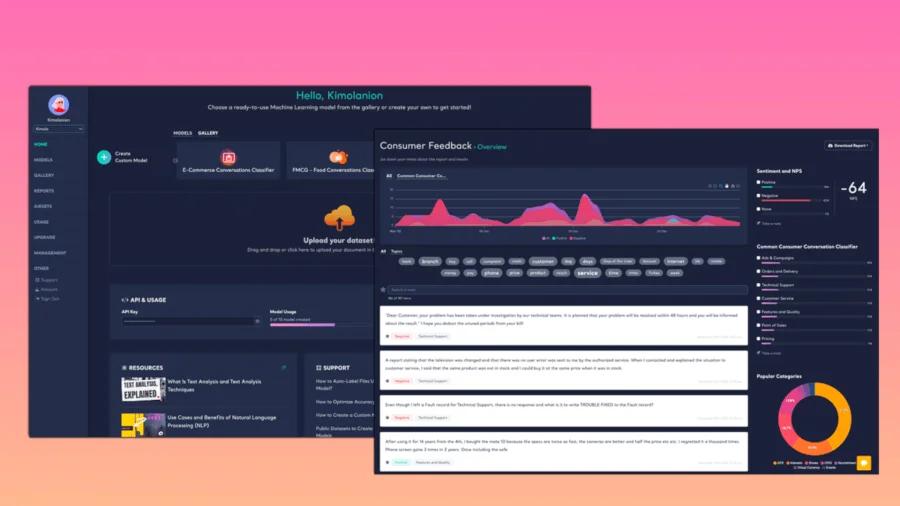
What you can accomplish using Kimola is listed below:
- Using the free browser extension, scrape reviews
- Drag and drop to create custom machine learning models and train AI (very easy, just drags and drops!)
- Use pre-built classifiers to categorize and examine client reviews (a gallery is available for each business)!
- Analyze sentiment of customer feedback
- See the NPS rating
- Make reports on customer journeys.
- Extrapolate common phrases and subjects from reviews
- Check out the feedback left by customers
- Using GPT integration, create marketing materials based on customer review
- Generate a readable executive summary, SWOT analysis
If you want an alternative to Amazon Comprehend, Kimola is a wonderful choice. It is a customer feedback-specific data analytics tool that enables you to gather feedback from numerous channels. You may easily evaluate and categorize the data with Kimola.
Kimola also offers a free pre-built models gallery that you can test it and use it for free to classify customer feedback in different sectors.
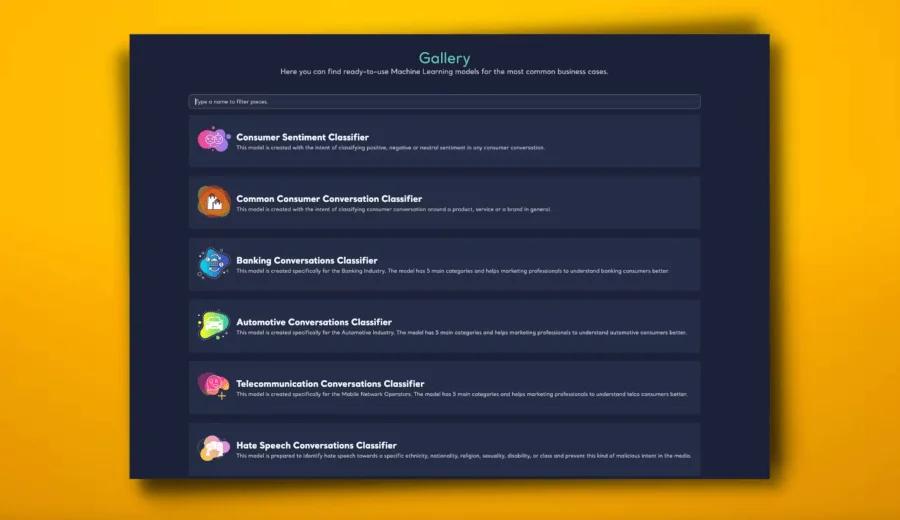
Conclusion: Kimola not only helps users understand their customers better but also allows them to create various marketing resources, including SWOT analysis, product descriptions, and social media themes, using customer reviews as the foundation. Its user-friendly interface and affordability make it a highly cost-effective solution that offers excellent value for money.
Kimola Pricing
- Free plan (no credit card required)
- Basic plan: $49 / month
- Standard plan: $179 / month,
- Business plan: $359 / month
- Enterprise plans available for Larger Companies
See all the plans and features offered by Kimola
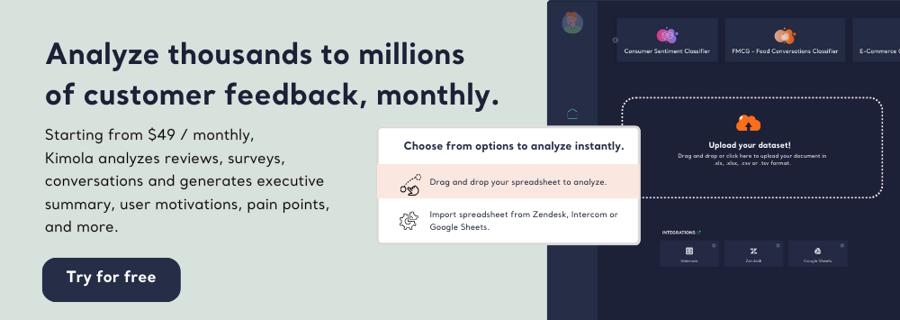
Kimola Reviews
Kimola has gained 5 stars from each review on G2.
👍 Pros
“I like the models and the chrome extension for getting the data. It used to take me one tool to scrape the data then another to analyse the data but now with the models Im in heaven with it all in this one tool.”
“Have enjoyed being able to create custom model, analyze a myriad of different data sets, and easily setup the analyses, as well as collection of data through airsets.”
👎 Cons
“User onboarding phase can be explained a bit more detailed.”
2- Amazon Comprehend vs. MonkeyLearn
MonkeyLearn is a platform for text analysis and machine learning that automates corporate activities and cuts down on hours of time-consuming data processing by hand. Compared to Amazon Comprehend, MonkeyLearn offers better quality ongoing product support, feature updates, and roadmaps.
However, MonkeyLearn has 4 downsides according to its users:
1- It's a challenge to have MonkeyLearn bucket support tickets into distinct user-readable buckets based on ticket text.
2- It’s as expensive as Amazon Comprehend.
3- There are only 4 integrations.
4- The platform is not evolving, they even haven't tweeted for a long time, so long time subscription is questioned.
MonkeyLearn Pricing
$299 monthly for 10.000 reviews with 3 models and 3 user seats.
MonkeyLearn Reviews
👍 Pros
“Ease of integrating text analysis in business workflows. The API is well documented.”
👎 Cons
“It's a challenge to have Monkey Learn bucket support tickets into distinct user-readable buckets based on ticket text. Monkey Learn will create a huge amount of new buckets for the tickets, rather than fitting tickets into existing buckets. This is not helpful.”
3- Amazon Comprehend vs. Alteryx
Alteryx is a leading supplier of a complete data science and analytics platform for businesses. Analysts can easily prepare, merge, and analyze data with a repeatable workflow, and deploy and share analytics at scale for deep insights.
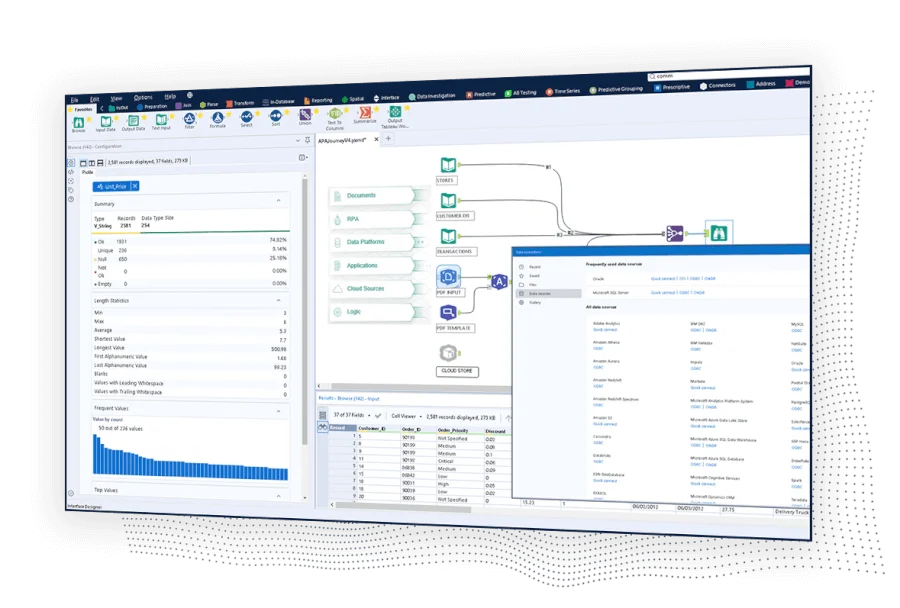
Compared to Amazon Comprehend and Alteryx, Alteryx offers more preferable feature updates and roadmaps guidance.
However, Alteryx has 5 downsides according to its users:
1- It isn't truly concerned with customer feedback.
2- The data transformation and loading process takes a long time.
3- It doesn't have an inbuilt timer, which might aid with workflow automation and editing.
4- High pricing, starting from $2300
5- Very complex, not really suitable for marketing people at all.
Alteryx Pricing
Intelligence Suite: $2300
Designer: $5195
Data Package - Location Intelligence: $11700
Data Package - Consumer Intelligence: $33800
All prices are per user, billed annually.
Alteryx Reviews
👍 Pros
“Its flexible behaviour towards data analytics as a platform can help businesses accelerate their analytics processes, reduce manual effort, and gain valuable insights from their data. Its user-friendly interface, advanced analytics capabilities, and extensive library of tools and connectors make it an excellent choice for businesses of all sizes and industries.”
👎 Cons
“While doing data cleaning and data pre-processing it takes a lot of time. Alteryx should work on its scalability feature.”
4- Amazon Comprehend vs. IBM Watson Tone Analyzer
IBM Watson Tone Analyzer is an analyzer for the tone. It helps you understand the emotional and language tones used in communication by analyzing text or conversation.
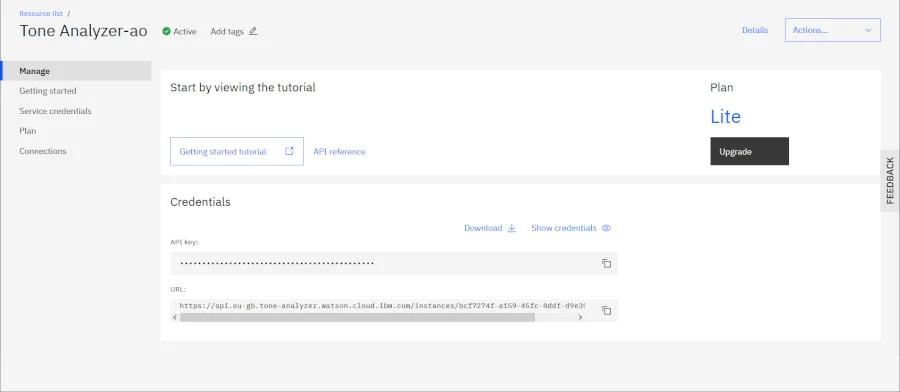
Compared to Amazon Comprehend, IBM Watson Tone Analyzer better meets the needs of businesses.
However, IBM Watson Tone Analyzer has 6 major downsides;
1- There isn't much documentation on how the sentiment analysis respond to text.
2- Support is only in English and French.
3- It’s not affordable for small or midsize companies.
4- The sentiment analysis is not always accurate.
5- There are no pre-built models to use for different businesses, you need to create your own custom models.
6- There is no dashboard, it's just an API.
IBM Watson Tone Analyzer Pricing
Unfortunately, IBM Watson Tone Analyzer doesn’t provide any plans and pricing on their website.
IBM Watson Tone Analyzer Reviews
👍 Pros
“I love the concept and how this organized into different tone categories. It's such a useful tool and can be very flexible to implement anywhere.”
👎 Cons
“The tone analysis is not always accurate and most of the time it picks up the wrong sentiment. Also, it would be good to have broader minute sentiment.”
5-Amazon Comprehend vs. Google Cloud Natural Language API
The Google Cloud Natural Language API is a service provided by Google Cloud for natural language processing. It helps businesses derive insights from unstructured text and make better decisions using Google machine learning.
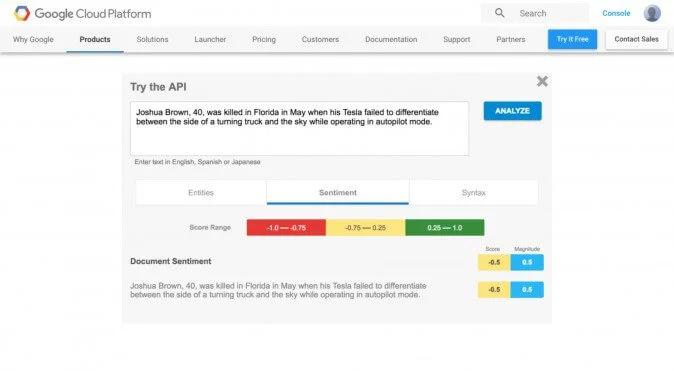
Google Cloud Natural Language API offers 24/7 live support compared to Amazon Comprehend. However, Google Cloud Natural Language API has 4 downsides according to its users considering customer feedback analysis:
1- There is no available text extraction or spelling checker.
2- Difficult for beginner users to learn. In order to receive the maximum benefit, a lot of data is also necessary.
3- The absence of data on all parameters.
4- It's only an API just like Comprehend but it's not applicable for customer feedback.
Google Cloud Natural Language API Pricing
It has different prices for all features. The price for each category varies by unit.
Google Cloud Natural Language API Reviews
👍 Pros
“This is one of the best implementations of Google's amazing NLP capability. This platform gives a direct REST API based interfacing with one of the world's best Natural Language Processing Engine.
It is so good at understanding the user contexts, extract our their intent, the objects, and subject out of a statement.”
👎 Cons
“I don't like how it functions as a black box; it would be nice to be able to get some insight as to how sentiment or salience scores are arrived at.”
6- Amazon Comprehend vs. Microsoft Text Analytics API
The Microsoft Text Analytics API is a group of services for text analytics that provides APIs for sentiment analysis, key phrase extraction, and topic detection for English text.
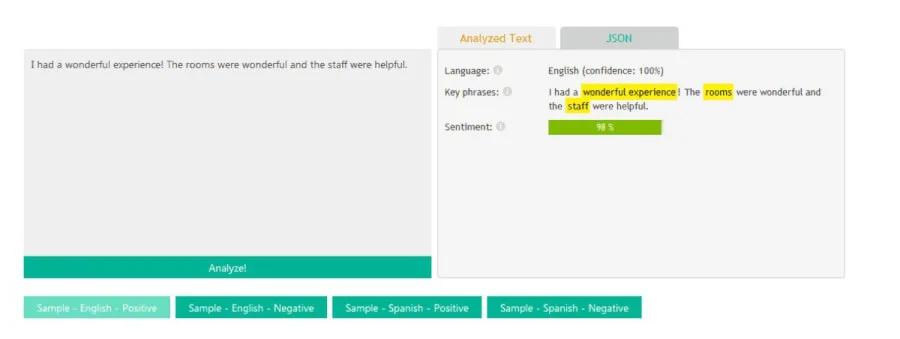
While Amazon Comprehend stands out in the field of “Retail” on an industry basis, Microsoft Text Analytics is at the forefront of the "Information Technology and Services" industry.
However, Microsoft Text Analytics API has 4 downsides according to its users:
1- There isn't a mobile or app version available for use on tablets or smartphones when on the go.
2- If not previously used, a manual or instruction is required.
3- The integration could be better, and the reliability is occasionally off.
4- It's not built for customer feedback analysis and surely it's not easy to use for that.
Microsoft Text Analytics API Pricing
Azure – standard:
$700 per 1M text records
$1,375 per 3M text records
$3,500 per 10M text records
Connected container – standard:
$560 per 1M text records
$1,100 per 3M text records
$2,800 per 10M text records
Microsoft Text Analytics API Reviews
👍 Pros
“Great API to process raw text. Makes it easy to see what people think of your product. We use it to collect key phrases in the text input so help analyze what people are saying about the latest product releases.”
👎 Cons
“I have found the sentiment meter to be flawed and completely incorrect at times. The AI needs a little work interpreting context created by other sentences.”
7- Amazon Comprehend vs. Relative Insight
Relative Insight is a platform for text analysis that uses comparison to extract value from words.
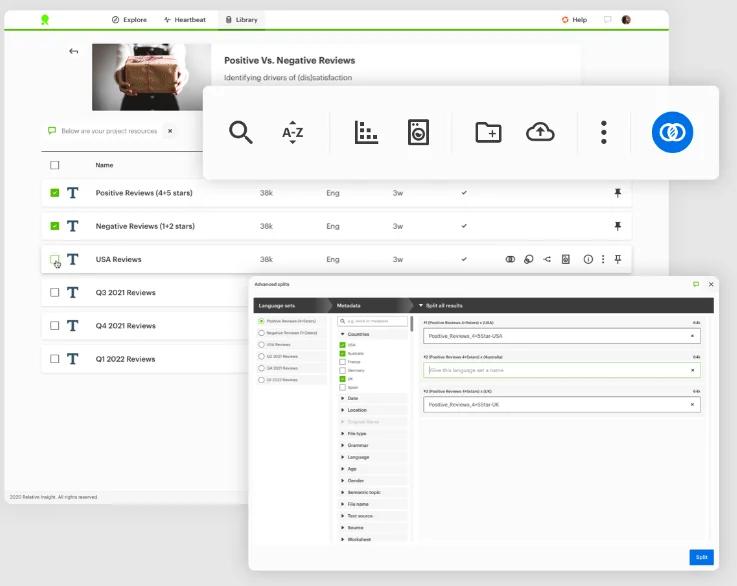
Comparing the quality of ongoing product support, Relative Insight is the preferred option over Amazon Comprehend.
However, Relative Insight has three downsides, according to its users:
1- It's not super intuitive, even with training.
2- There are no filter options to put comparisons in a high-to-low list.
3- Its dashboard can be confusing to navigate.
Relative Insight Pricing
Unfortunately, Relative Insight doesn’t provide any plans or pricing on their website.
Relative Insight Reviews
👍 Pros
"Once you begin the analysis, it's easy to use and impressive in the insights it provides. "The team is also really hands-on to get the most out of it."
👎 Cons
"Relative insight can be hard to use sometimes. The UX can be confusing for first-time users especially, and the process for setting up a question to be analyzed is not always the most intuitive."
8- Amazon Comprehend vs. InMoment (Wootric)
InMoment is a platform to measure and improve customer satisfaction by analyzing feedback from multiple sources.
According to users, InMoment Text Analytics more effectively addresses their company's needs than Amazon Comprehend.
However, InMoment has three downsides, according to its users:
1- There is a limitation where you can only run one type of survey at a time.
2- The filters for products do not always work.
3- Every time someone logs in, a date must be chosen on the date picker.
InMoment Pricing
Unfortunately, InMoment doesn’t provide any plans or pricing on their website. You have to contact them for pricing and plans that scale with your needs.
Wootric Reviews
👍 Pros
"The best thing is helping data follow with an easy and organized way to register all information."
👎 Cons
"There is a limitation where you can only run one survey and one type of survey at a time." "I'd like to run different surveys at once, and that doesn't seem possible."
9- Amazon Comprehend vs. spaCy
spaCy is a Python NLP library for processing large volumes of text for production use, including information extraction, natural language understanding and pre-processing for deep learning.
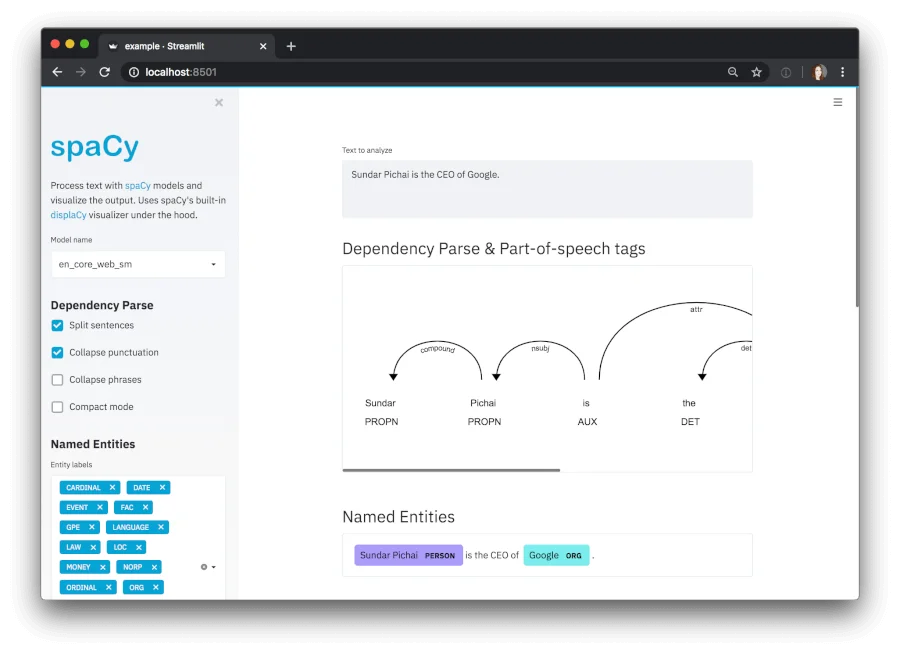
When comparing the quality of ongoing product support, users experienced that spaCy is the preferred option.
However, spaCy has 3 downsides according to its users:
1- The interface is not intuitive and user-friendly.
2- It's complicated to use packaging models and deploy them.
3- The platform does not analyze customer feedback.
spaCy Pricing
Unfortunately, spaCy doesn’t provide any plans and pricing on their website.
spaCy Reviews
👍 Pros
“The best thing I like is the the pretrained word vectors they provide. It is really a great thing as it reduces the time of a whole NLP based implentation by eliminating this time taking word vector formation task.”
👎 Cons
“The documentation can use some more examples. Also, it's a little inconvenient to use it in tandem with other nlp libraries. It also takes some work to integrate it into a pipeline.”
10- Amazon Comprehend vs. Kapiche
Kapiche is a platform that uses its Natural Language Processing technology to assist customer-centric organizations in understanding and optimizing their brand, customer, employee, and product experiences.
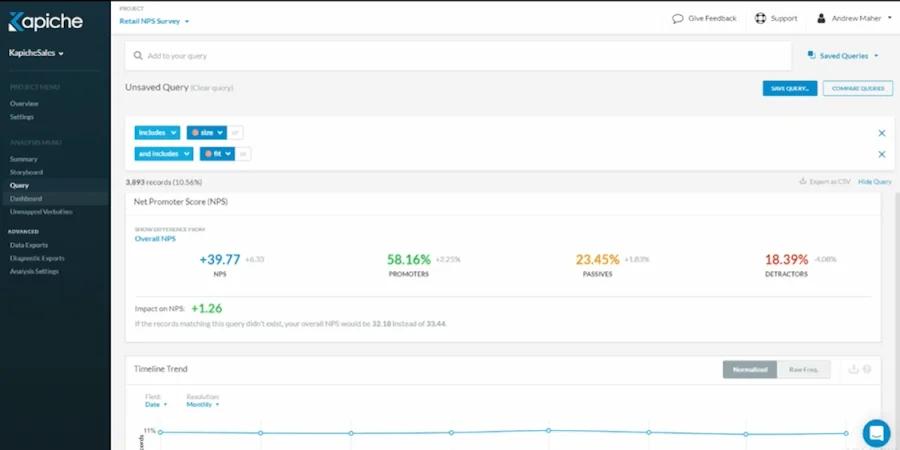
Kapiche was preferred over Amazon Comprehend by users for feature updates and roadmaps.
However, Kapiche has 3 downsides according to its users:
1- There is a lack of direct drill-through functionality in the matrix impact graph.
2- It's not so flexible on the output.
3- It's not provide more options for customizable dashboards and default settings.
Kapiche Pricing
Business: Starting at $2.650 for a month
Kapiche Reviews
👍 Pros
“I like the ability to sort verbatim by themes and specific data points. Once prepared, the dashboards also help manage visibility with detailed filters, which you can choose to stay visible or hide when not needed. This makes it easier for us to see the whole picture and act on it quickly.”
👎 Cons
“It does take a considerable amount of time to build out queries. I do not like that it does not perform sentiment analysis on different parts of a comment, instead just an entire comment even if there are multiple topics discussed.”


